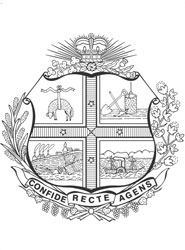Banner image: Panorama of Ipswich from Limestone Hill, Biggingee Sorabjee Poochee, 1865. Whitehead Studios, Picture Ipswich | Ipswich Libraries
Introduction

Ipswich Municipal Council was formed in 1860 and became Ipswich City Council in 1904. The Shire of Ipswich was established in 1916 and the following year it was renamed Shire of Moreton. In June 1949 the Moreton Shire Council held its first meeting and in 1995, Ipswich City Council and Moreton Shire Council amalgamated.
In 2010 celebrations were held to commemorate the Sesqui-centenary (150 years) of local government in Ipswich. In 2024, Ipswich will celebrate 120 years as a city.
Information on the history of Ipswich City Council and the former Moreton Shire Council can be found on the Picture Ipswich website.
Ipswich City Council respectfully acknowledges the Traditional Owners, the Jagera, Yuggera and Ugarapul people of the Yugara/Yagara Language Group, as custodians of the land and waters we share. We pay our respects to their Elders past, present and emerging, as the keepers of the traditions, customs, cultures and stories of proud peoples.